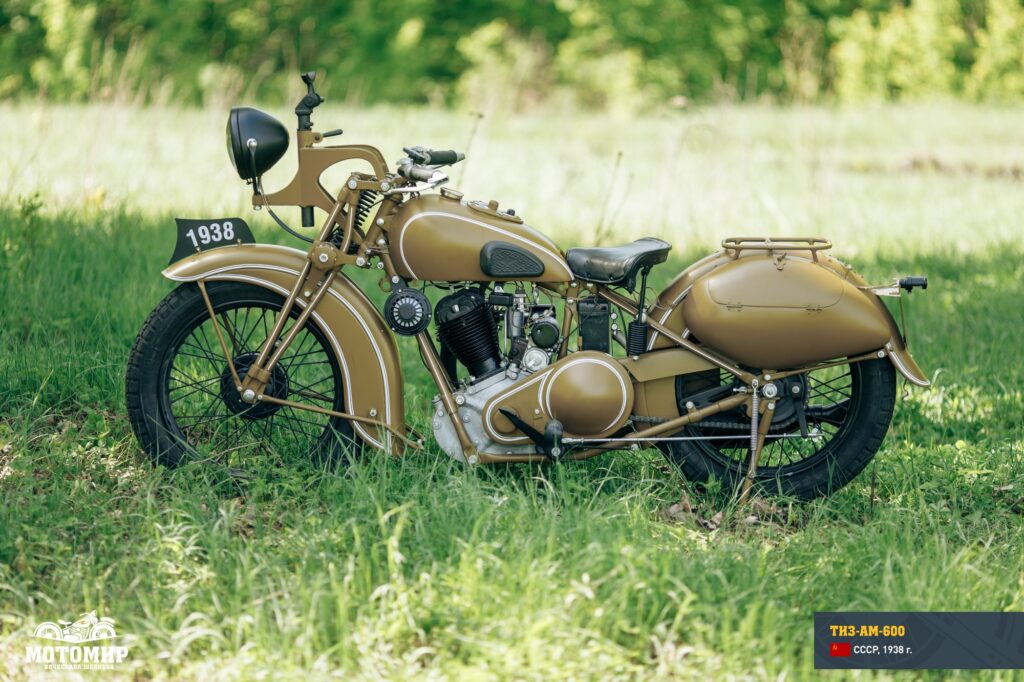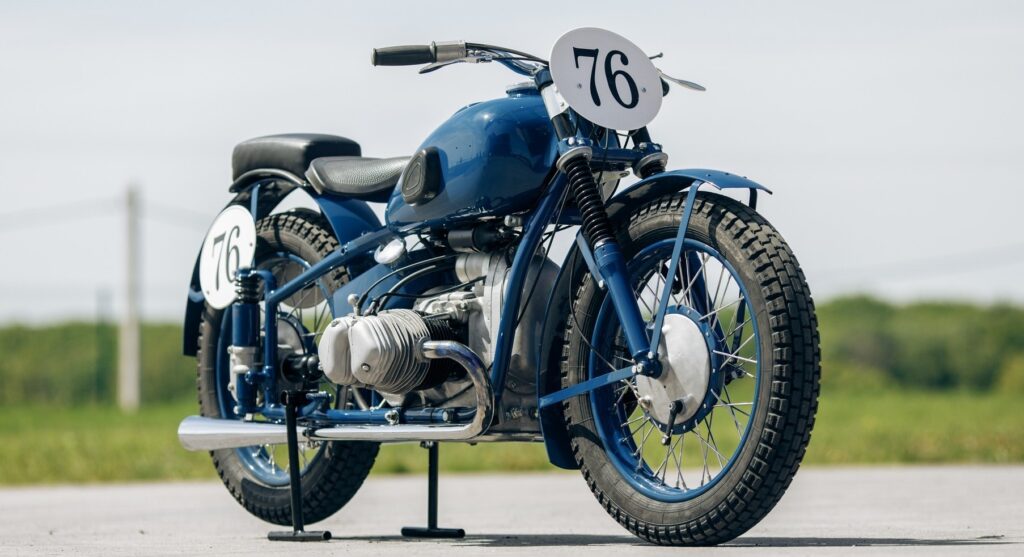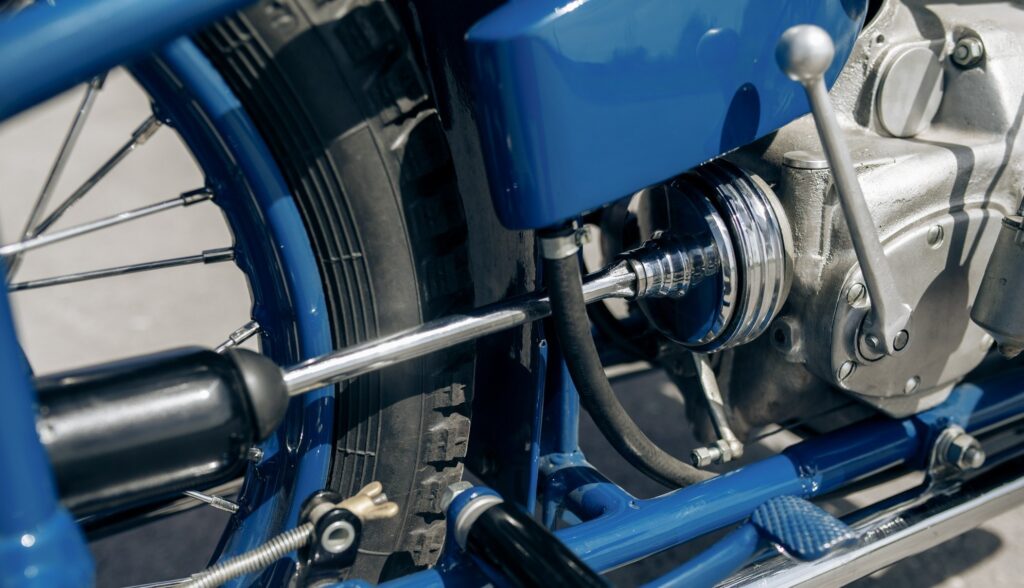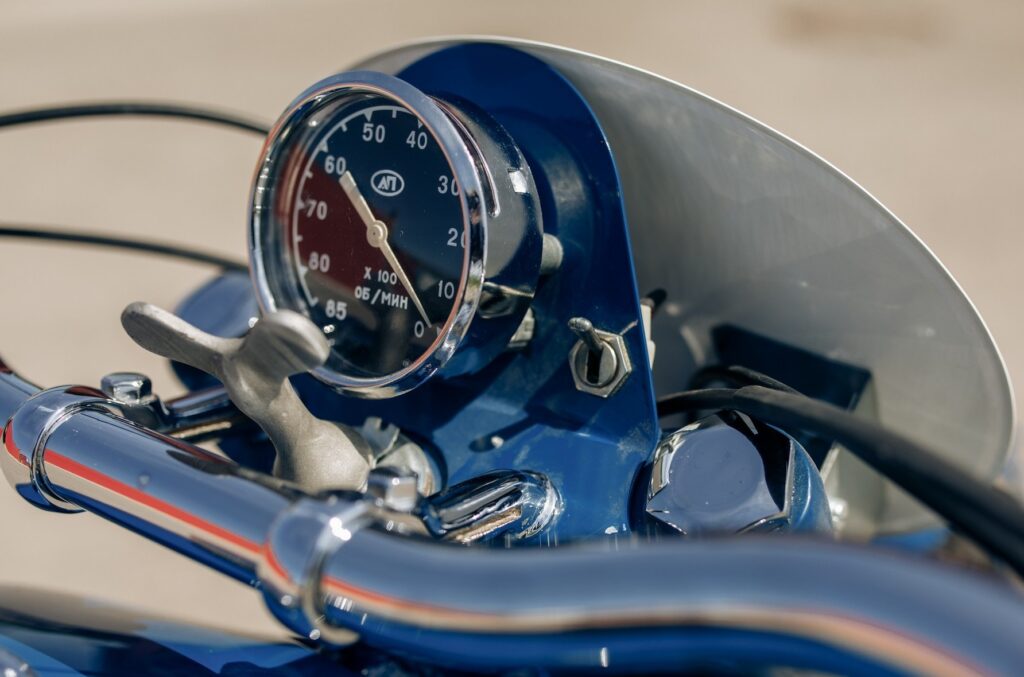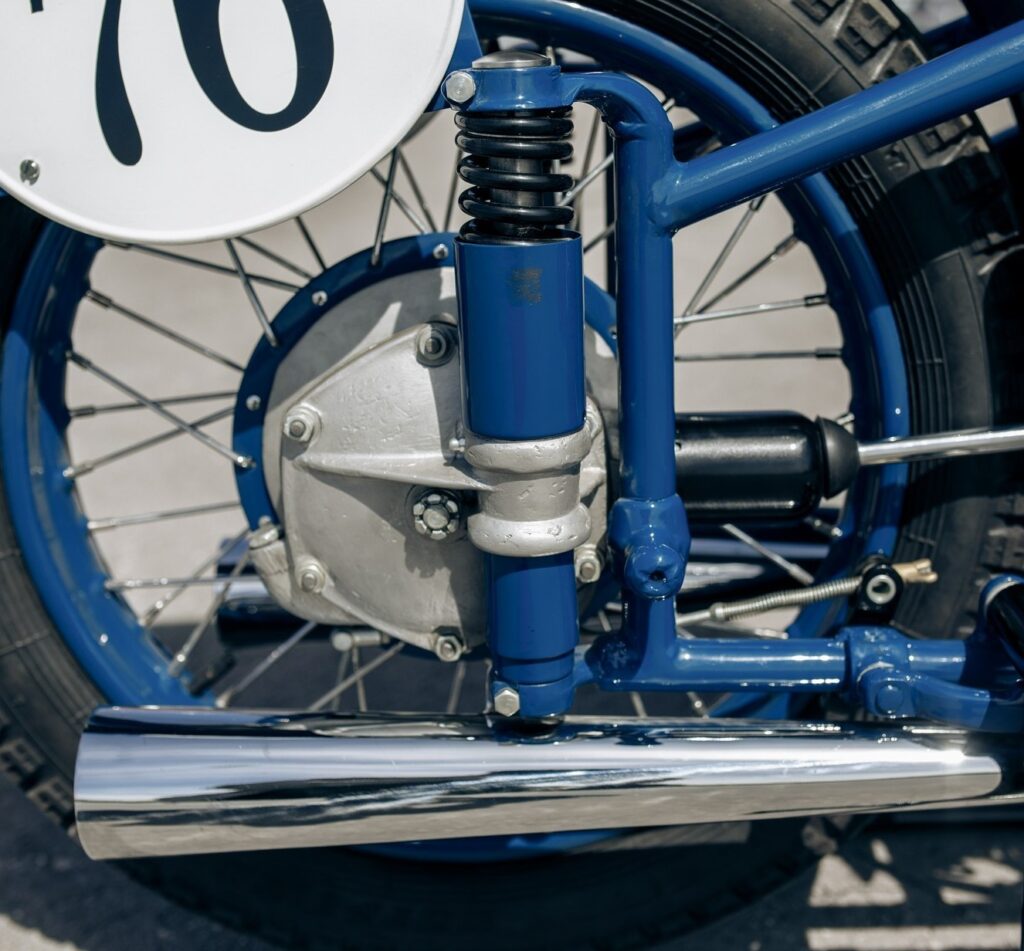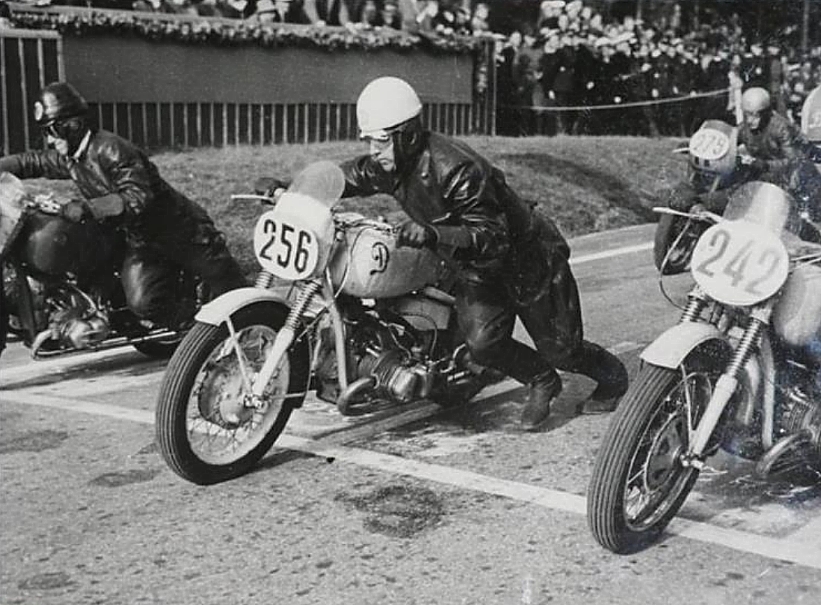Soviet Racing Motorcycle SMZ M-76
Retroscope | Serpukhov
The history of Serpukhov motorcycles began in 1939. The design department began to work on improving the motorcycle ML-3 with a 125 сс two-stroke engine with a power of 3 hp. In addition to motorcycles and the spare parts for them it was planned that the plant will produce the training cut motor models from substandard and defective parts, production of necessary packaging for products and consumer goods (window and door handles, photo frames, fruit knives, etc.). The amount of work was small. In 1940, the plant produced only an experimental batch of motorcycles ML-3. In 1942, the State Defense Committee decided to organize the Leading Design Bureau for Motorcycles (VKB) in Serpukhov. Its basis was formed by engineers who came from Izhevsk, led by the former chief designer of Izhevsk Motorcycle Plant Vsevolod V. Rogozhin. In 1946, the VKB was transformed into the Central Design and Experimental Bureau of Motorcycle Construction (CKEB).
By this time, Glavmotoveloprom (Main Department of Motorcycle and Bicycle Production) decided to produce a new motorcycle model L-8 at the Serpukhov Motorcycle Plant (SMZ) with a four-stroke OHV 350 cc engine with a power of 8hp. Technical documentation was received at Serpukhov from the Leningrad Motorcycle Plant. After proper preparation, the enterprise started the production of new L-8 motorcycles, the first batch (180 units) of which was produced in June 1941. However, World War II prevented the further production of L-8 motorcycles.
In October 1941, most of the crew and equipment were evacuated to the east. The equipment was installed at the Izhevsk Machine-Building Plant and was used for the production of defence equipment. Some of the workers stayed there, the rest was sent to Tyumen with all of the documentation for the production of motorcycles. At the same time people from Taganrog Instrumental Factory arrived there, along with equipment and rigging for the production of TIZ-AM-600 motorcycles.
The Serpukhov plant began to recover after the defeat of the German Wehrmacht army near Moscow. Experts from the Ministry of Automotive Industry came to Serpukhov with a government task: Serpukhov plant would be repairing captured motorcycles.
SMZ was the only factory in the USSR that was repairing captured motorcycles. The more rapidly the Soviet Army was advancing to the enemy’s camps, the more trophies arrived. During the Stalingrad campaign, the Serpukhov-II railway station was filled up with damaged German motorcycles. At the factory, they were restored and sent back to the front, now to fight against the Germans.
At SMZ they were combining М-72 sidecars with the “Harley-Davidson” and “Indian” motorcycles, which arrived from the USA under the Lend-Lease program. In addition, from 1944 to 1946, spare parts for motorcycles AM-600 were produced. In 1946, the plant entered the subordination of the Central Design Bureau of Motorcycle Construction as an experimental workshop (CKEB). Its main task was the production of special experimental engines for motorcycles.
When in 1947 the Irbit Motorycle Plant (IMZ) began production of a sports 750 cc bike, the M-75 , the facilities at Serpukhov also started its own developments and improvements.
The new motorcycle with the M-76 index installed improved cylinders, new camshafts, and a new lubrication system with a dry crankcase. The compression ratio was raised to 9:1, a magneto was used in the ignition system. The engine output increased from 35 to 38hp. Experimental bikes for record races which showed a speed of 206 km/h had even more power.
The М-75 , М-76, М-75М, M-80 motorcycles had exhaust system megaphones instead of silencers. It was believed that they created a vacuum, which was supposed to improve the purification of exhaust gases. This exhaust type, combined with a high-speed engine, created a monstrous noise. People called this motorcycle “Hell Organ”.
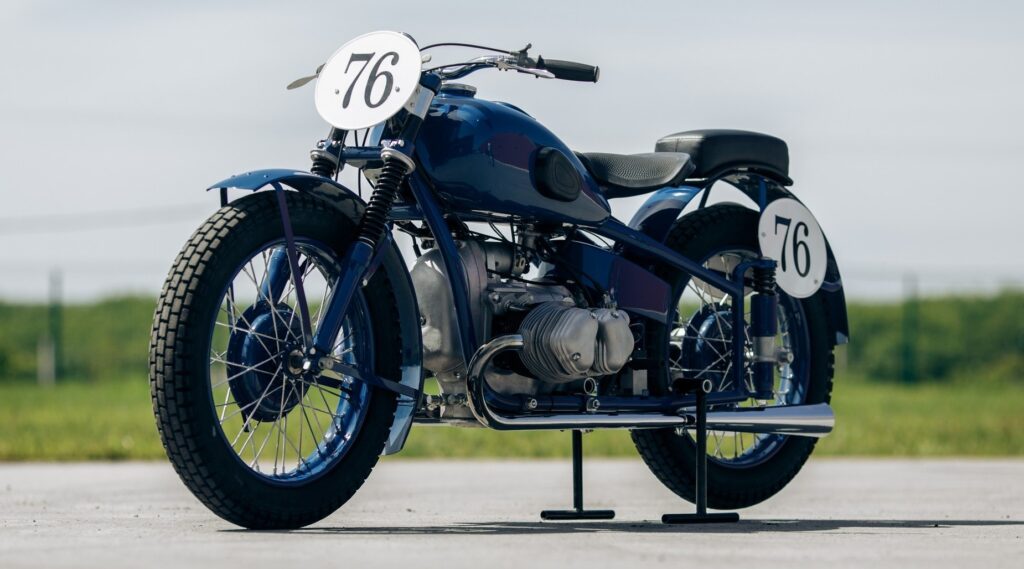
In 1948-1949, in Serpukhov about fifty M-76 motorcycles were made. The thirst for road-racing was the same in the USSR as in other countries, increased power, speed and noise adding to the excitement.
Sources:
The Complete History of Soviet Motorcycles – Andrey Myatyev
MOTORWORLD
Sportsbikes of the USSR
moto.ru
b-Cozz archives



